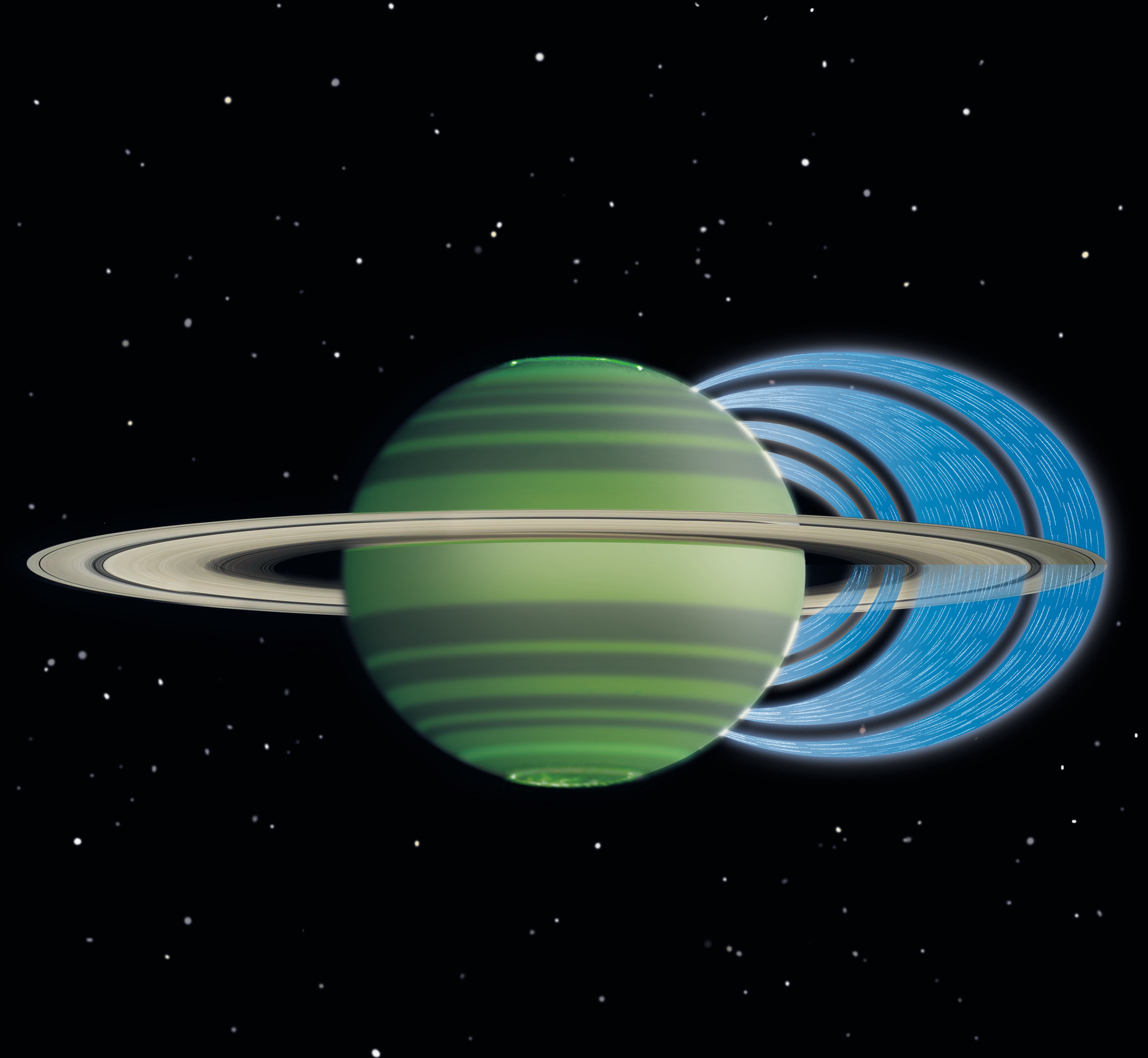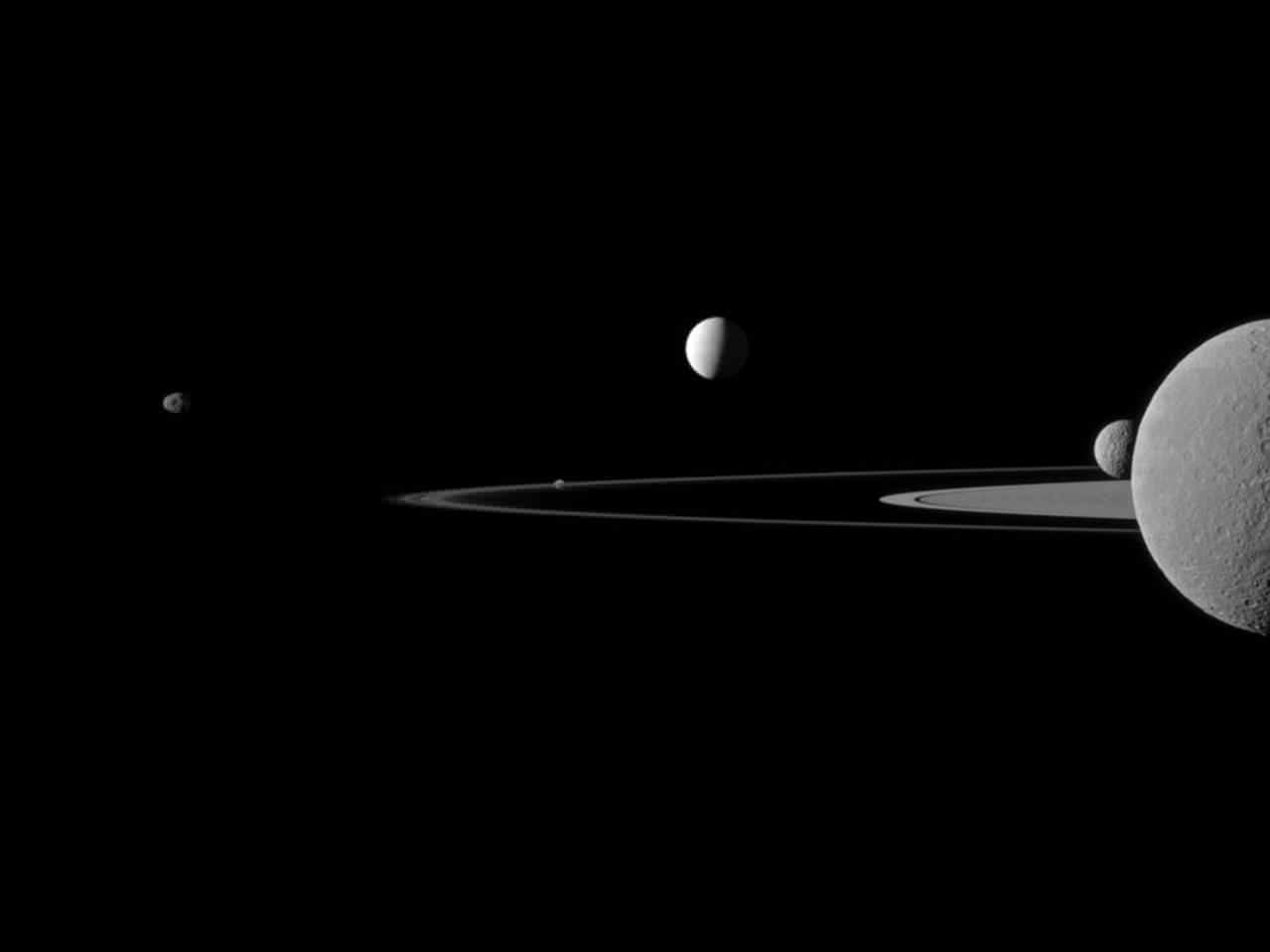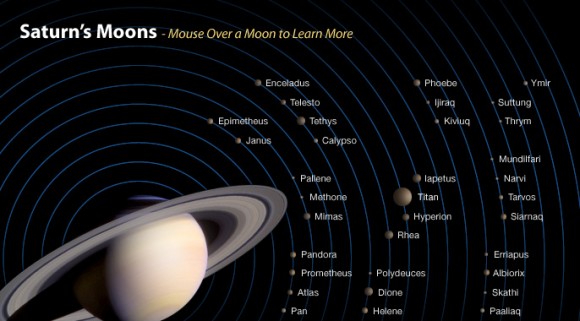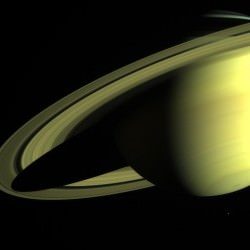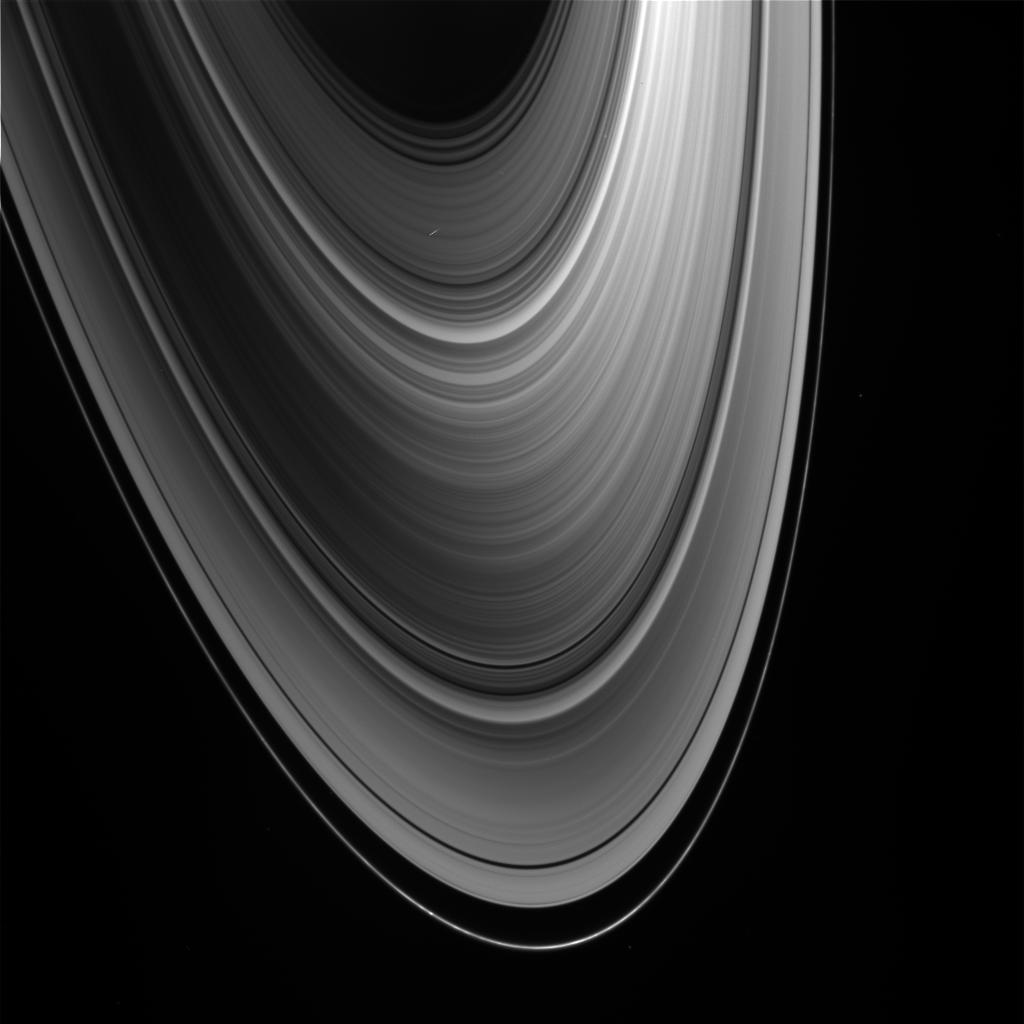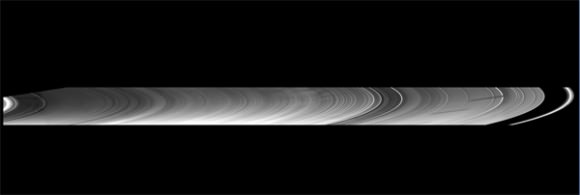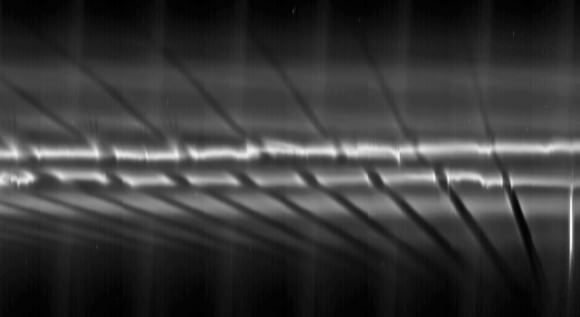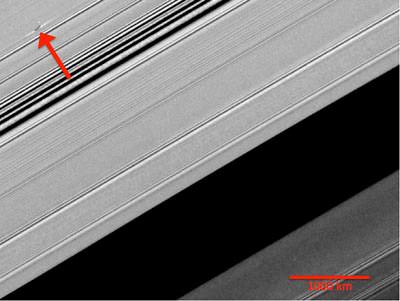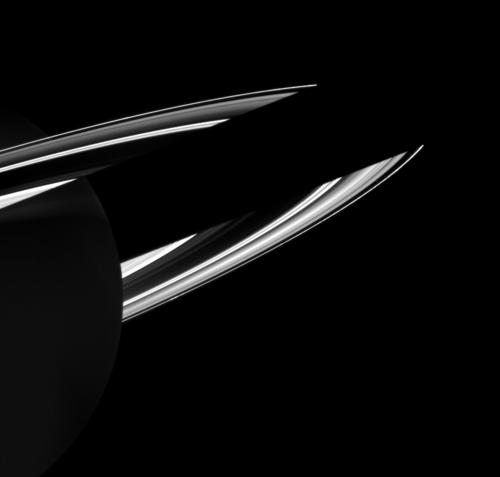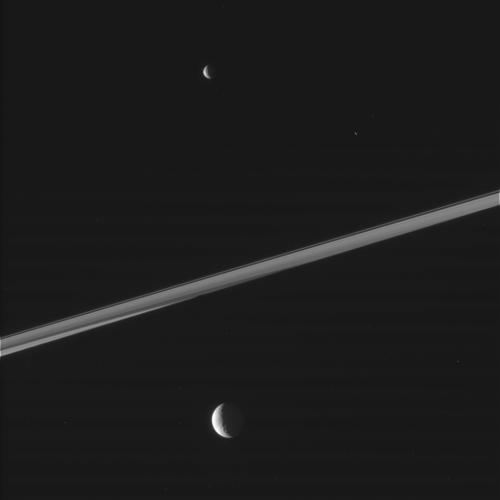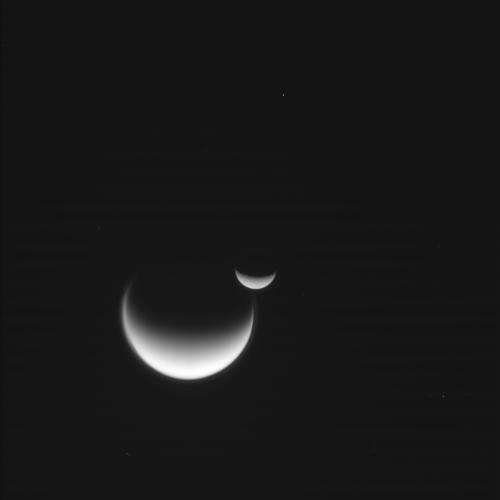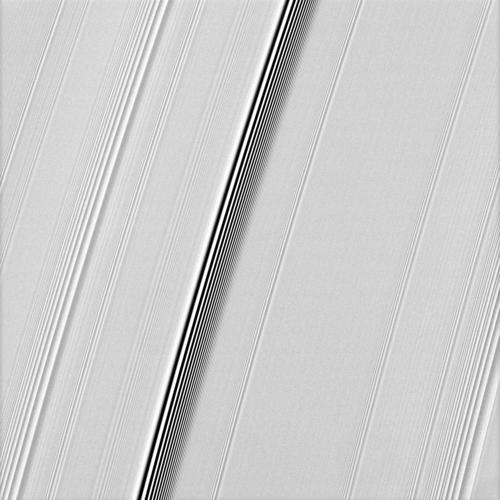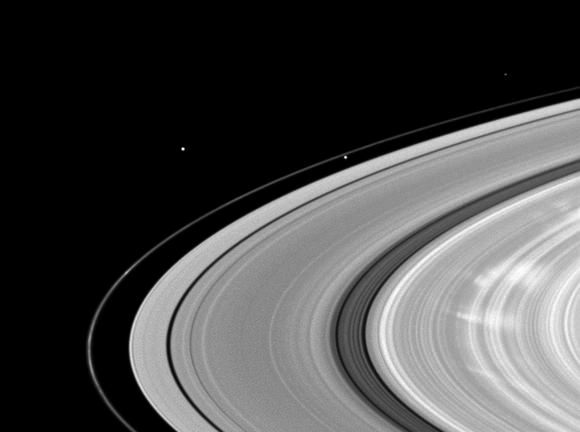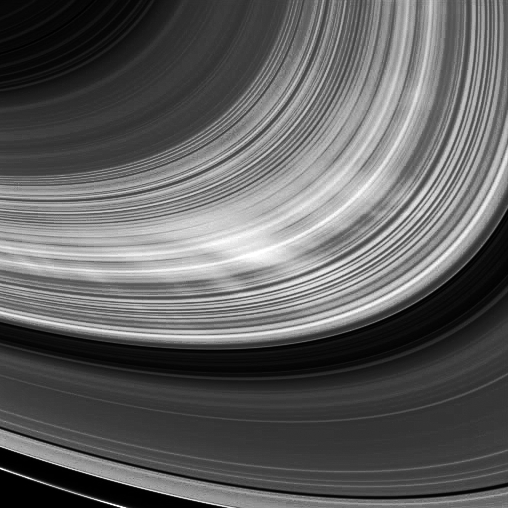Astronomers have known for years there was water in Saturn’s upper atmosphere, but they weren’t sure exactly where it was coming from. New observations have found water is raining down on Saturn, and it is coming from the planet’s rings.
“Saturn is the first planet to show significant interaction between its atmosphere and ring system,” said James O’Donoghue, a postgraduate researcher at the University of Leicester and author of a new paper published in the journal Nature. “The main effect of ring rain is that it acts to ‘quench’ the ionosphere of Saturn, severely reducing the electron densities in regions in which it falls.”
Using the Keck Observatory, O’Donoghue and a team of researchers found charged water particles falling from the planet’s rings into Saturn’s atmosphere. They also found the extent of the ring-rain is far greater, and falls across larger areas of the planet, than previously thought. The work reveals the rain influences the composition and temperature structure of parts of Saturn’s upper atmosphere.
O’Donoghue said the ring’s effect on electron densities is important because it explains why, for many decades, observations have shown electron densities to be unusually low at some latitudes at Saturn.
“It turns out a major driver of Saturn’s ionospheric environment and climate across vast reaches of the planet are ring particles located 120,000 miles [200,000 kilometers] overhead,” said Kevin Baines, a co-author on the paper, from the Jet Propulsion Laboratory. “The ring particles affect which species of particles are in this part of the atmospheric temperature.”
In the early 1980s, images from NASA’s Voyager spacecraft showed two to three dark bands on Saturn and scientists theorized that water could have been showering down into those bands from the rings. Then astronomers using ESA’s Infrared Observatory discovered the presence of trace amounts of water in Saturn’s atmosphere back in 1997, but couldn’t really find an explanation for why it was there and how it got there.
Then in 2011 observations with the Herschel space observatory determined water ice from geysers on Enceladus formed a giant ring of water vapor around Saturn.
But the bands seen by Voyager were not seen again until 2011 as well, when the team observed the planet with Keck Observatory’s NIRSPEC, a near-infrared spectrograph that combines broad wavelength coverage with high spectral resolution, allowing the observers to clearly see subtle emissions from the bright parts of Saturn.
The ring rain’s effect occurs in Saturn’s ionosphere (Earth has a similar ionosphere), where charged particles are produced when the otherwise neutral atmosphere is exposed to a flow of energetic particles or solar radiation. When the scientists tracked the pattern of emissions of a particular hydrogen molecule consisting of three hydrogen atoms (rather than the usual two), they expected to see a uniform planet-wide infrared glow.
What they observed instead was a series of light and dark bands with a pattern mimicking the planet’s rings. Saturn’s magnetic field “maps” the water-rich rings and the water-free gaps between rings onto the planet’s atmosphere.
They surmised that charged water particles from the planet’s rings were being drawn towards the planet by Saturn’s magnetic field and neutralizing the glowing triatomic hydrogen ions. This leaves large “shadows” in what would otherwise be a planet-wide infrared glow. These shadows cover 30 to 43 percent of the planet’s upper atmosphere surface from around 25 to 55 degrees latitude. This is a significantly larger area than suggested by the Voyager images.
Both Earth and Jupiter have a very uniformly glowing equatorial region. Scientists expected this pattern at Saturn, too, but they instead saw dramatic differences at different latitudes.
“Where Jupiter is glowing evenly across its equatorial regions, Saturn has dark bands where the water is falling in, darkening the ionosphere,” said Tom Stallard, one of the paper’s co-authors at Leicester. “We’re now also trying to investigate these features with an instrument on NASA’s Cassini spacecraft. If we’re successful, Cassini may allow us to view in more detail the way that water is removing ionized particles, such as any changes in the altitude or effects that come with the time of day.”
Sources: Keck Observatory
, Nature.

